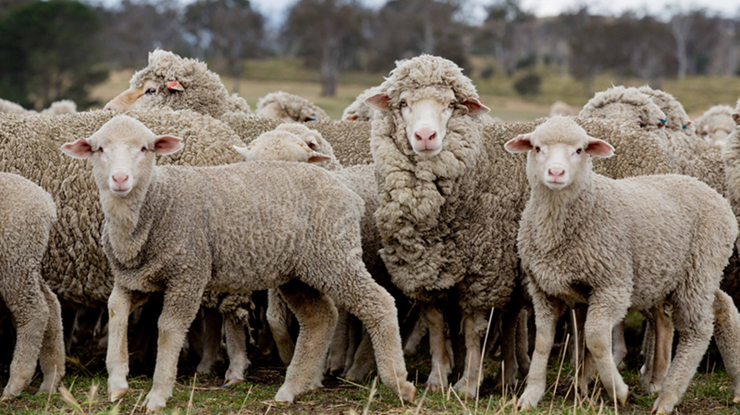 Photo credit: Australian Wool Innovation (AWI)
Photo credit: Australian Wool Innovation (AWI)
Sights set on Merino ewe survival
Merino ewes make up about two-thirds of Australia’s breeding ewe flock and, anecdotally, tend to have higher mortality rates than ewes of other breeds.
However, the industry doesn’t have an accurate handle on what causes many of these losses – which usually occur around lambing – or what cost-effective and practical intervention strategies might increase ewe survival rates.
A team of researchers, veterinarians and consultants are working with Merino producers to tackle this challenge.
The four-year project is funded by MLA and Australian Wool Innovation (AWI) and builds on a recent study which assessed the causes and rates of ewe mortality during the lambing period across commercial maternal flocks.
Getting a handle on losses
A review of Australian literature indicated a range in mortality rates of 2–10% of Merino ewe flocks, with reports as high as 25% in some flocks.
However, the method with which mortality is determined could be influencing that variability. For example, mortality can be determined as the number of confirmed deaths by counting carcases, or as the difference in numbers between yardings.
Without a carcase, the cause of death is harder to determine with certainty. Generally, the cause of death is divided into three categories – those occurring before, during or after lambing.
A fourth category can be considered – the deaths which occur around the lambing period not directly caused by pregnancy or lambing, but to which ewes can be more susceptible during this time.
Common causes of death before lambing include pregnancy toxaemia and hypocalcaemia, or vaginal prolapse, if followed by complications such as infection or rupture of the vaginal wall.
Risk factors include age and litter size, with older ewes or those carrying multiples being at greater risk. A prolonged or difficult birth (dystocia) is a common cause of Merino ewe death during lambing.
Dystocia can be due to the lamb’s position (such as head back or leg back), or the ewe’s physiology (for example, a small pelvis). Risk factors for dystocia include ewe age, body condition score, litter size and lamb birth weight.
Death after lambing can often occur due to reproductive tract infections, or mastitis.
Some studies indicate only about 10% of ewe deaths are investigated by a vet.
However, the cause of death can’t always be determined by just looking at a carcase, with research finding veterinary post-mortems may be needed to diagnose dystocia. However, a post-mortem does not guarantee a diagnosis – one study showed that a cause of death could not be found in up to 20% of mortalities.
Ongoing research
During this year’s lambing, mortality incidence and causes will be determined on a selection of farms across southern Australia as part of the Merino ewe survival project. Producers’ farm diaries and veterinary-conducted post-mortems will be used to collect data on Merino ewe mortality. This data, together with the recently conducted industry-wide survey on Merino ewe mortality, will inform mitigation strategies that will be trialled on-farm during the lambing season of 2025.



